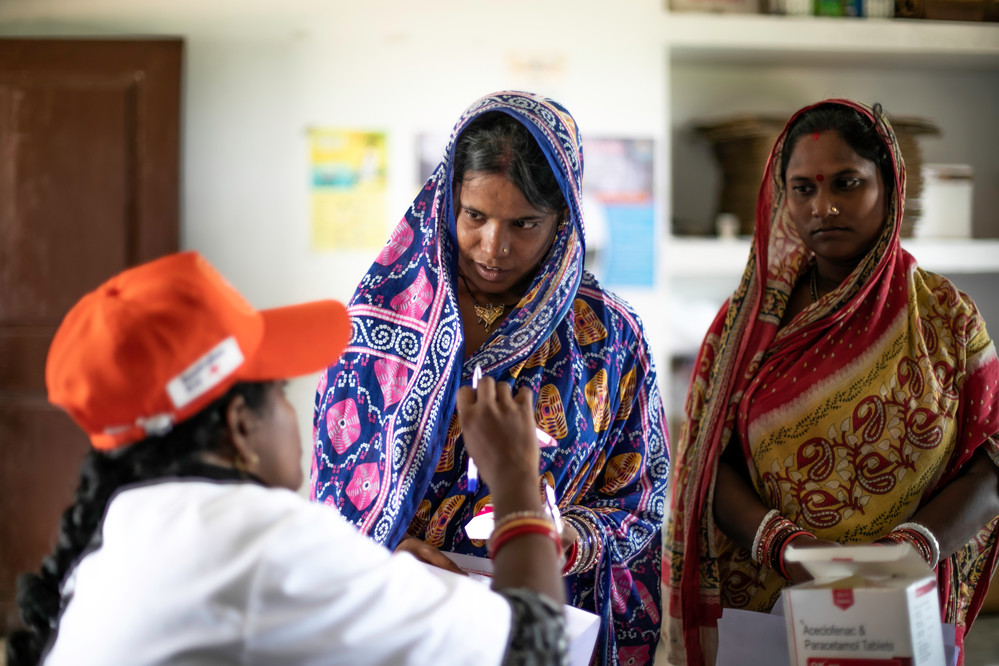World Sexual Health Day 2020
Growing up sex was a forbidden word. Our school curriculum accommodated basic formal sexuality education, but it was never really taught. Conversations about relationships, pleasure, masturbation, intimacy, and sexuality were even more restricted at home. Expression of intimacy and an interest in sexuality were not welcomed at school or home.
In this environment, puberty struck as a horrid surprise for me. It became a subject of shame and came with a whole new set of restrictions – from being forbidden to visit a religious place to curfews and diktats over not playing any sport during “those days”. Active denial of love, sexuality, intimacy, and pleasure came in small doses of advice hidden behind the carefully crafted care and teachings of adults. For a 12-year-old girl these were enough to diminish self-confidence and worth.
Fifteen years later, as I work on issues of sexual and reproductive rights in South Asia, I find that the high walls restricting young people’s access to conversations about sex and sexuality still exist. Institutions of trust (schools, family, government) continue to stigmatize sexuality and instil the ideal of abstinence till marriage. However, young people are curious and rightly so. Their curious mind use technology, unreliable media sources, erotica, and most of all pornography to find answers. Pornography exposes young minds to violent sexual acts, abusive sexual language and introduces them to negative messages around relationships.
A survey in 2014 by Institute for Public Policy Research on Young people, sex and relationships, found that 7 out of 10 young people (typically aged 13-15) said ‘accessing pornography was seen as typical’ while they were at school. Of these young people, about 45 per cent young men and 29 percent young women agreed that ‘pornography helps young people learn about sex’, while 21 percent young men and 40 percent young women also strongly agreed that ‘pornography leads to unrealistic attitudes to sex’. Half as many young men (18 per cent) as young women (37 per cent) also strongly agreed that ‘pornography encourages society to view women as sex objects’.
It is dangerous to let the idea of pleasure and sexuality be controlled by and imparted through unreliable mediums. The impact of this exposure is significant on young minds. It often leaves them in a state of confusion, uneasiness and with a future burdened with deeply problematic attitudes towards sex.
In Bangladesh, a study done by Haider et. al, found that by age 19, approximately 88 percent of urban adolescent males and 44 percent of rural adolescent males reported premarital sexual intercourse. Differences in experimentation were even greater for girls. 47 percent of 19-year-old urban girls reported they had already experienced sexual intercourse but only 5 percent of their rural counterparts had. It was also observed that approximately 39 percent of male adolescents had sex with commercial sex workers and of them, 56 percent did not use a condom. [1] Moreover, the incidence of abortion was found to be 35 times higher in unmarried adolescents compared to their married counterparts and over a third of young girls aged 13-19 had experienced some form of gendered harassment and unwanted sexual attention.[2]
When the importance of consent, respect and sexual diversity is not understood it leads to abuse of women’s rights and limits the freedom over reproductive and sexual choices.
As reported by the UNFPA, one in seven girls in the South Asia region have given birth by the age of 18 (married before their 18th birthday), often in the context of high unmet need for contraception and child marriage. Up to 63% of adolescent pregnancies in the region are unintended, contributing to a significant, although underreported, burden of unsafe abortion.
While the importance of sexual health is globally recognized, education to promote it remains a controversial issue. In South Asia, socio-cultural and religious norms strongly shape and restrict the access of young people to sexual and reproductive health information and services. In some countries these norms get legal legitimacy through the prohibitions imposed by national laws and policies. Some of the other factors that play a significant role are low education, gender disparity, early and forced marriages, restricted access to family planning information and services, and legal regulations restricting access to abortion.
Comprehensive sexuality education is an undeniable right of every young person, but it needs to go far beyond the biology of reproduction, birth control, STI’s and HIV. Young people in the region have a desire to know more about sexuality, pleasure and that must be met with active efforts to include those ideas in our education.
Asia as a region has some of the most populous countries with higher percentages of younger population in countries such as Afghanistan, Bangladesh, India, Indonesia, Pakistan, Philippines– all have median ages of 30 or younger.
We should strive to build a conducive environment supporting young people’s right to a healthy and happy transition into adulthood. Sexuality education should be an integral component of our pedagogy today, it needs to expand its scope- from being limited to sexual and reproductive health information on reproduction, negative health consequences, safety, consent and harassment- and include in its ambit pleasure, love, desire and sexuality.
Looking back in time, I realize if I had access to an enabling environment to empower me with comprehensive sex education, I think I would have been better prepared for my life as an adult.
________________________________________________
[1] Rob, U., & Mutahara, M. U. (2000). Premarital Sex among Urban Adolescents in Bangladesh. International Quarterly of Community Health Education, 20(1), 103–111. https://doi.org/10.2190/nflm-e0my-q26n-dbvh
[2]Burnet Institute, Kennedy, E., Willenberg, L., Mohamed, Y., Baravilala, W., & Sauvarin, J. (2016). Sexual and Reproductive Health of Unmarried Young People in Asia and the Pacific Review of knowledge, behaviours and outcomes. Unfpa. https://doi.org/10.1017/CBO9781107415324.004
when
country
Kenya, Women & girls, Americas & the Caribbean, North Macedonia, Palestine, Youth empowerment, Brazil
Subject
IPPF LIVE









